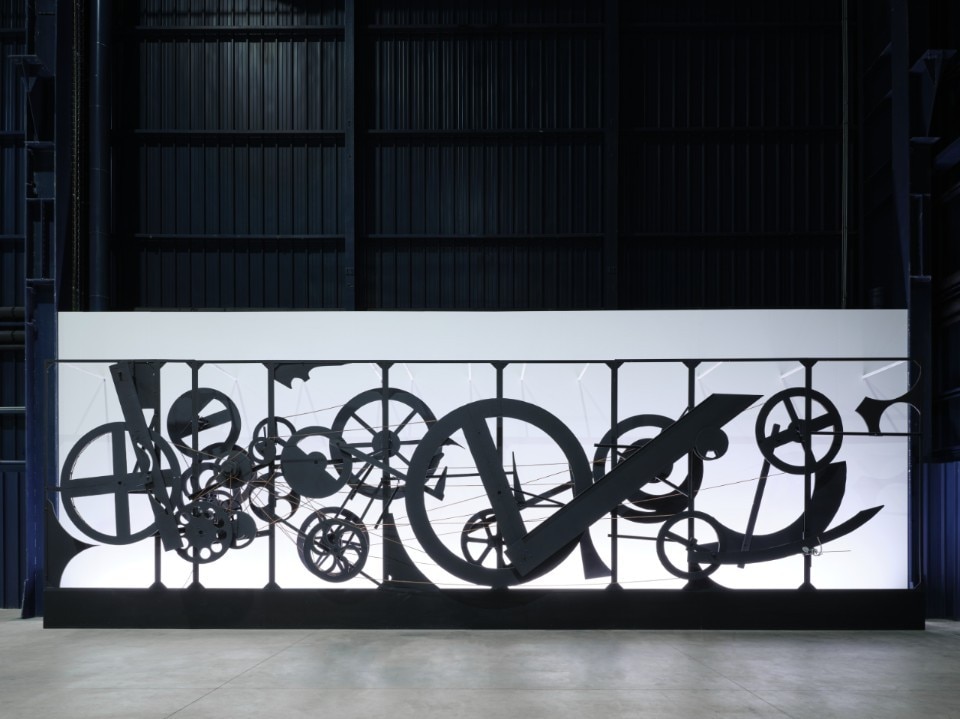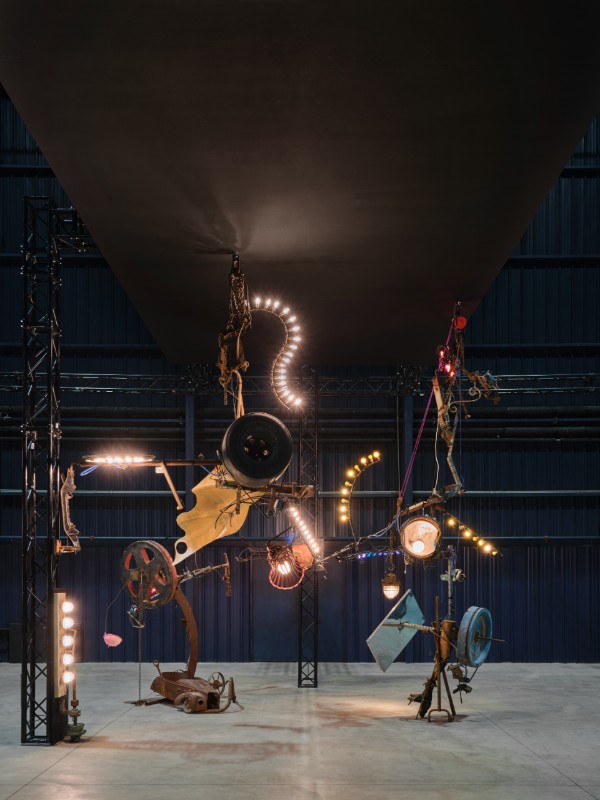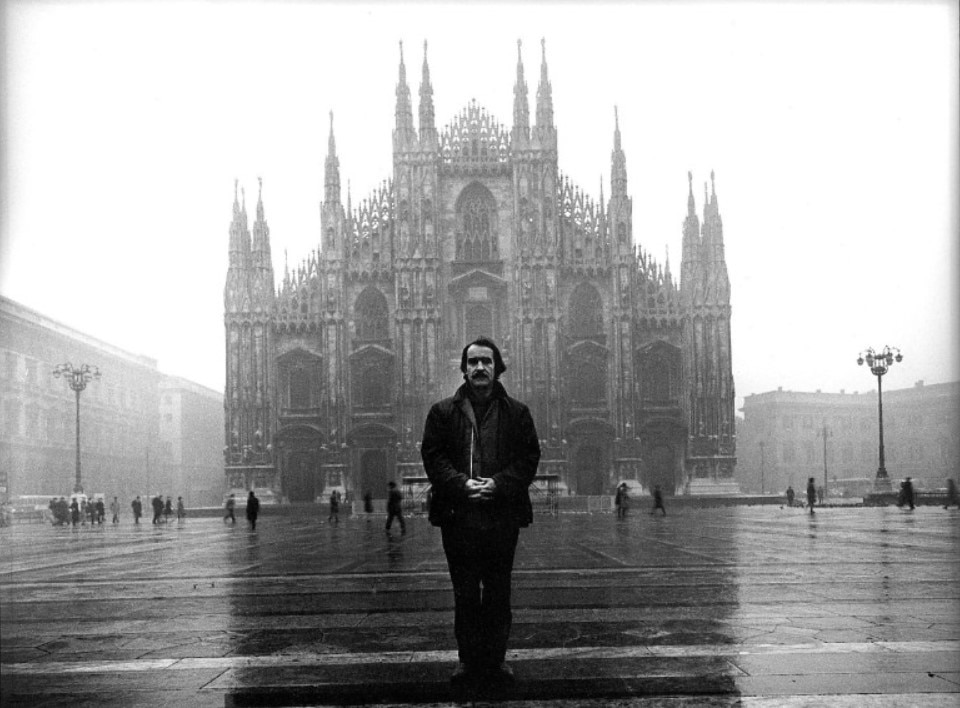In the pages of Domus 493, December 1970, Pierre Restany writes: “Ten years later, October 27, 1960 - the day on which the Nouveaux Réalistes group was founded in Paris - takes on the dimension of a historical fact. (...) These ten years have opened up perspectives, research that heralds a new methodology of language, a depersonalization of art for the benefit of different methods of intervention in the structures of communication.”
These were the starting lines of the article celebrating the 10th anniversary funeral festival of Nouveau Réalisme (whose first manifesto came out in 1960, by the French critic), organized by Restany together with Guido Le Noci, director of the Apollinaire Gallery.

On this occasion, along with other artists, Christo wrapped the Monument to Vittorio Emanuele II in Piazza Duomo, Arman distributed accumulations of plastic bags throughout the city, Niki de Saint Phalle participated with the one of her Tirs, shooting at an altar with a rifle. But one of the most indelible performances in the history of the city of Milan is undoubtedly the one that Jean Tinguely staged in the parvis of Piazza Duomo, titled La Vittoria: covered by a solemn purple velvet drape with the initials NR (for “Nouveau Réalisme”), a gigantic golden phallus, decorated with bunches of grapes and filled with explosives and firecrackers, after being set off, self-destructed in less than three quarters of an hour, amid bursts, sparks and smoke, with the famous song O Sole Mio, perhaps sung by a drunk man, in the background.

The funeral of Nouveau Réalisme did not mark Jean Tinguely's first encounter with the city of Milan, which actually dated back more than a decade earlier. This connection is one of the many aspects of his work documented in the major retrospective exhibition that Pirelli HangarBicocca is dedicating to the eclectic Swiss artist, curated by Camille Morineau, Lucia Pesapane, and Vicente Todolí with Fiammetta Griccioli, and open until February 2, 2025.
Restany, also in his writings for Domus, mentions the Lombard capital as a “cultural outlet of Paris” between the 1950s and 1960s: museums were being renovated, and some galleries were working as places of experimentation. It is no coincidence that in 1954 the Italian artist and designer Bruno Munari (who had made his first Useless Machines in the 1930s) invited in Studio d'Architettura B24 Tinguely, with whom he shared the friendship of Pontus Hultén, so that he could present his Méta-mécaniques for the first time in Italy, wire sculptures made up of geometric and colored elements, close to the experiments in geometric abstractionism of the early twentieth century, and endowed with movement thanks to the presence of small electric motors, which the Swiss sculptor had been working on for some years.

Nor is it a coincidence that the exhibition in the Hangar Navate begins precisely with the juxtaposition of a group of machines from this period with two monumental works from the 1980s, Cercle et carré-éclatés (1981) and Méta-Maxi (1986), as if to anticipate the results of the exploration of the machine, movement, and sound that Tinguely would carry on throughout his life, going so far as to redefine the concept of sculpture.
I am a movement artist. I started by doing painting, but I got stuck, I was in a dead end. (...) What I could do with paintings was to wait until they were exhausted, and I could never reach the end. So I decided to introduce movement into it.
“I started from constructivist elements (...): I reused their elements and put them in motion to arrive at a re-creation, to re-create an infinite painting, which would continuously find new compositions thanks to physical and mechanical movements placed behind the work. And so, slowly, I realized that movement was an expressive possibility in and of itself, with which one could achieve things that were sculpturally different from what had been done before.”

Tinguely approached the 1960s with experiments related to an idea of overcoming the function and functionality of the machine, as an autonomous generator of art and disconnected from its productive obligations. His works are made with metal elements, mixed with found objects from everyday life, such as stuffed animals, discarded clothes, and toys. So in Ballet des Pauvres (1961), and Maschinenbar (1960-85), each element produces convulsive and ironic noises and movements, from hammers striking small animals, to animal skulls swaying on mechanical arms.
The Milanese exhibition space, originally intended for the manufacture of railroad coaches and locomotives, brings out another subject, that of productivity: at first glance, the contraptions, gears, belts, and metallic noises in Tinguely's works seem to re-propose an industrial scenario that is, instead, bizarre and dysfunctional. A particularly significant work in this regard is Rotozaza No. 2 (1967): glass bottles running on a conveyor belt are slowly sent to the gallows and destroyed by a hammer, below which nothing remains but a pile of shattered glass.

The energy of movement, another element of fascination for Tinguely, is portrayed by the sculptures Pit-Stop (1984), Schreckenskarrette - Viva Ferrari (1985), and Shuttlecock (1990), dedicated to the artist's passion for Formula 1 and racing cars, as machines that lead nowhere, but whose goal is to show off their aesthetic dimension and power.
Also capturing visitors' attention, though, are the “lamp sculptures” in the center of the Navate. Made starting in the early 1970s, these are distinguished from the other works by the fact that movement appears to be a secondary element to the primary function of illuminating. Initially conceived as floor lamps, beginning in the 1980s Tinguely also designed larger-scale ceiling solutions, as in the installation created for Cafeteria zur Münz in Zurich in 1983, for Café Kyoto in Japan, and finally for the bar of the Hotel Palace in Lausanne, Switzerland in 1991, of which the works in the exhibition Mackay Messer, Mercedes, and Vive Marcel Duchamp are part.

The exhibition layout, conceived as a sound and visual scenography of works, is complemented by a constant layering of sounds, another area of experimentation for Tinguely. The accidental cacophonies of works such as Plateau agriculturel (1978), composed of parts of agricultural machinery that are activated like instruments in an orchestra, are overlaid with musical motifs from the archive videos on display, which contribute to an alienating atmosphere.
Closing the exhibition, in addition to the Philosophers series, which Tinguely dedicates to real and ideal artists and friends who had influenced him, is 1989's Le Champignon magique, made together with his second wife, Niki de Saint Phalle – also celebrated in Milan these months with an exhibition at Mudec curated by Lucia Pesapane – with whom he created an artistic partnership that would be a propulsive element in the art and careers of both.

The exhibition, produced in collaboration with the Museum Tinguely in Basel (designed by Mario Botta), hosts about forty works, most of them still in working order, and allows visitors to immerse themselves in the artist's creative and radical dimension, in an atmosphere somewhat reminiscent of that of his Freiburg studio, La Verrerie, a disused glass factory of more than 3,000 square meters purchased in 1988 and transformed by Tinguely into the anti-museum par excellence, the Torpedo Institut.
Opening image: Jean Tinguely in front of the Duomo in Milan, Italy, November, 1971 © SZ Photo / Wolleh Lothar / Bridgeman Images Photo Wolleh Lothar
- Exhibition:
- Jean Tinguely
- Curated by:
- Camille Morineau, Lucia Pesapane and Vicente Todolí with Fiammetta Griccioli
- Location:
- Pirelli HangarBicocca
- Dates:
- From 10th October 2024 to 2nd February 2025


